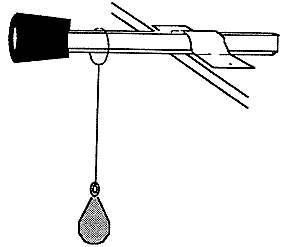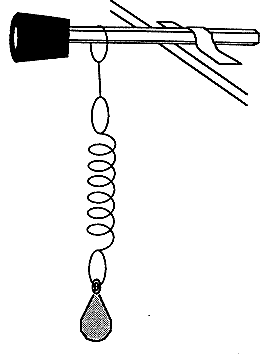4th Grade Performance Task
Contributed by: New York State Education Department (NYSED)
NYS Alternative Assessment in Science Project (1996)
Description:
Students will observe the motion of both a pendulum
and a spring pendulum, explaining the similarities and differences
between the two types of motion.
This task assesses students' abilities to observe,
describe, interpret data, and compare.
This task is designed to take students approximately
10-15 minutes to complete.
Overall Task Content Area:
-
Physical Science
Specific Knowledge Areas:
-
Position and motion of objects
Performance Expectations:
- conducting investigations
- using equipment
- organizing and interpreting data
National Science Education Standards:
4 B PS 2: Position and motion of objects: Grades K-4
2.2 An objectís motion can be described by tracing and measuring
its position over time.
2.3 The position and motion of objects can be changed by
pushing or pulling. The size of the change is related to the strength
of the push or pull.
4 A SI 1: Abilities necessary to do scientific inquiry:
Grades K-4
1.3 Employ simple equipment and tools to gather data and
extend the senses. In early years, students develop simple skills,
such as how to observe, measure, cut, connect, switch, turn on and
off, pour, hold, tie, and hook. Beginning with simple instruments,
students can use rulers to measure the length, height, and depth
of objects and materials; thermometers to measure temperature; watches
to measure time; beam balances and spring scales to measure weight
and force; magnifiers to observe objects and organisms; and microscopes
to observe the finer details of plants, animals, rocks, and other
materials. Children also develop skills in the use of computers
and calculators for conducting investigations.
(Use the "hot" link on the PALS
home page to check the full text of related National Science
Education Standards, if desired.)
National Council of Teachers of Mathematics:
AL4: Analyze change in various contexts :
Grades pre K-5 a. describe qualitative change, such as a student's
growing taller
PS2: Solve problems that arise in mathematics and in
other contexts:
Grades pre K-5
COM1: Organize and consolidate their mathematical thinking
through communication:
Grades pre K-5
General Instructions to the Teacher:
This task is designed to take students approximately 10-15 minutes
to complete.
Students will be working individually during this exercise.
Students should be ready to work as soon as the period begins.
The materials should be set out at each lab station, if possible.
A central supply area, if needed, should be easily accessible. All
supplies should be clearly labeled.
Materials for "Observing Objects":
The teacher will need:
- new, unsharpened pencils
- florist or craft wire (thin)
- fishing sinkers (1-2oz)
- small springs
- #4 or #5 black rubber stoppers with center holes
- duct tape (heavy duty tape)
At each station students should have:
- pendulum device
- pendulum spring device (diagrams of devices are shown below)
Advance Preparation
- Springs should be flexible enough that a 1oz. or 3/4oz lead
fishing sinker will stretch the spring. Springs can be purchased
from a hardware store.
- The wire for the devices should be a very thin, flexible craft
wire.
- Assemble the pendulum and spring devices as shown below.
 Pendulum
Device Pendulum
Device
 Spring
Device Spring
Device
Safety:
- Wear goggles.
- Be careful.
- Teachers and students should always exercise appropriate safety
precautions and utilize appropriate laboratory safety procedures
and equipment when working on science performance tasks.
Extensions/Modifications:
- Task does not easily lend itself to including mathematical
criteria in the rubric.
|


 Pendulum
Device
Pendulum
Device Spring
Device
Spring
Device